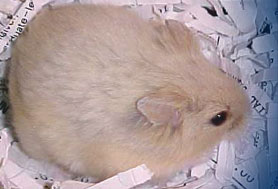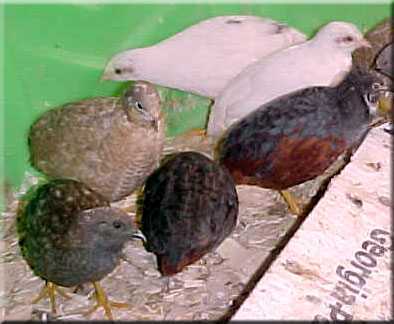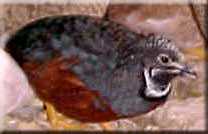

My Button Quail:
No longer raising button quail currently. Page is for informational purposes only. I cannot offer any button quail or eggs at this time.
4/19/05
Click each image below to see a larger picture.
|
See some of the button quail I have hatched from eggs:
|
Button quail eggs are very tiny! The coin next to this egg is a dime. |

This baby button quail is only a few hours old and is about the size of a bumble bee. |
|
|
Button QuailA few months ago, I traded a few hamsters for a pair of Button Quail. I find them to be very interesting birds. They are not cuddly like my cockatiels or other parrot type birds but they are really cute all the same. The male makes a sort of "pew, pew, pew" call that is not very loud or annoying. Button quail are about the size of a large Easter chicken chick at adult size! Their eggs are very small and newly hatched chicks are said to be the size of a bumble bee! (see below for a picture of a button egg next to a dime). When I decided to get the pair of Button Quail, I had to decide how to house them. Button quail have some unique requirements.
I did not have much of money at the time and managed to construct an aviary for them that met the above needs. I took a plastic kiddie pool that was about 3.5 feet in diameter and melted holes in even increments around the top edge. I then bought some plastic lawn netting for about $10 and used nylon ties to secure it until it formed a 3.5 foot high circle. I then fastened soft and flexible netting across the top using nylon ties. I then cut a door in it. This is probably my short fall because it is a pain to get into and if I make another some design improvements will be done. This is how I am currently keeping my button quail:
|
||||
 |
||||
| These button quail babies hatched on 7/13/04 and were only hours old in the pictures. They are next to a dime for size comparison. | ||||
Basic egg hatching and new chick care info:
|
||||
The kiddie pool aviary I made for my first pair of button quail.
|
||||




